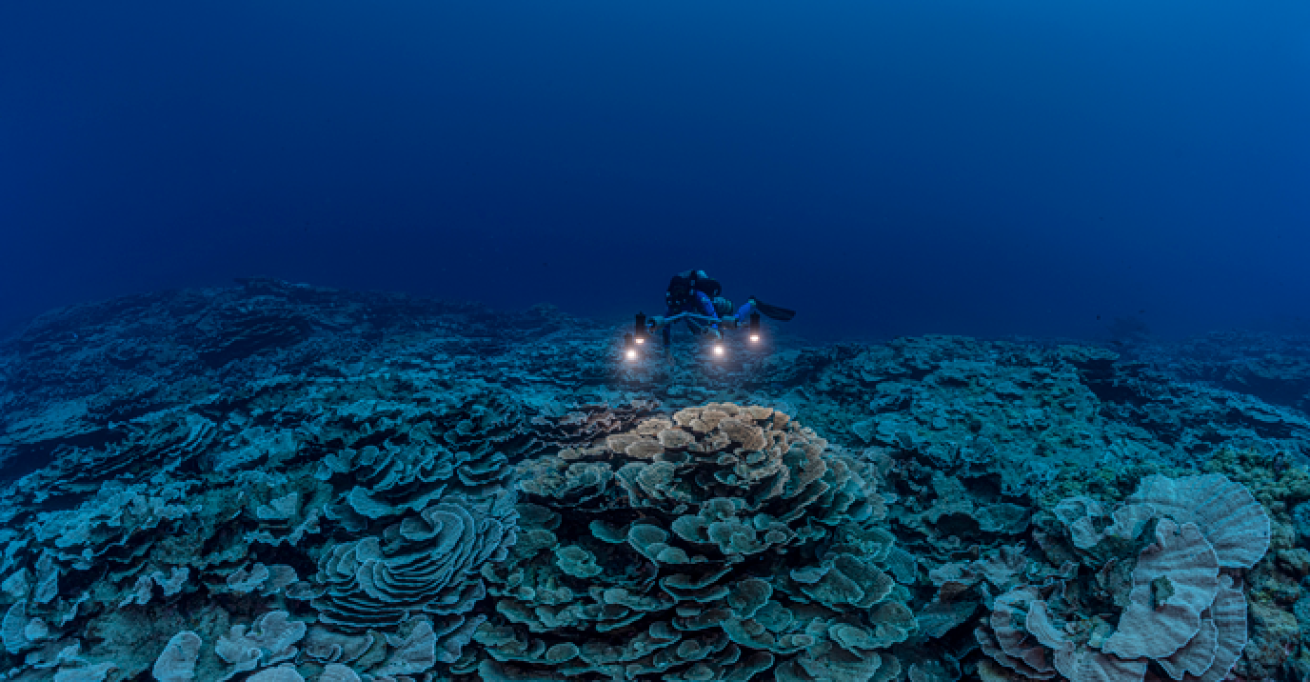Pristine Coral Reef Untouched by Bleaching Discovered in Tahiti

UNESCO/Alexis Rosenfeld/1 OceanA diver explores the newly discovered reef.
A pristine reef untouched by coral bleaching has been discovered more than 100 feet deep in Tahiti by a UNESCO dive team mapping the ocean floor. The reef stretches for nearly two miles, making it one of the largest healthy reefs in the world according to a UNESCO press release.
“This remarkable discovery in Tahiti demonstrates the incredible work of scientists who… further the extent of our knowledge about what lies beneath,” says Audrey Azoulay, UNESCO Director-General, in the release.
Starting nearly 100 feet below the ocean’s surface and dipping as deep as 213 feet, the reef receives enough light for corals to grow and reproduce but is deep enough the underwater heat waves that typically leave corals destroyed in their wakes. A about 30 percent of coals on the Great Barrier Reef, for example, died off after a 2016 bleaching event. The UN predicts annual global bleaching within the century.
“French Polynesia suffered a significant bleaching event back in 2019. However, this reef does not appear to have been significantly affected,” Dr. Laetitia Hedouin of France’s National Centre of Scientific Research (CNRS), who was part of the expedition, says in the release. “The discovery of this reef in such a pristine condition is good news and can inspire future conservation. We think that deeper reefs may be better protected from global warming.” The researchers estimate it took about 25 years for the reef to grow into its current condition.
Divers discovered the sprawling reef during a UNESCO effort to map the bottom of the ocean. To date, only 20 percent of the ocean has been mapped in high resolution. On this particular expedition, the dive team racked up a total of about 200 hours underwater studying the reef, during which they witnessed a coral spawning.
"It was magical to witness giant, beautiful rose corals which stretch for as far as the eye can see,” French photographer Alexis Rosenfeld, leader of the international UNESCO dive team, says in the release of the flower-shaped corals that stretch more than 6 feet across. “It was like a work of art.”
Additional dives are planned at the site in the next few months to investigate further.
"As shallow waters warm faster than the deeper waters we may find these deeper reef systems are refuges for corals in the future,” Murray Roberts, a leading marine scientist from the University of Edinburgh, tells the BBC. “We need to get out there to map these special places, understand their ecological role and make sure we protect them for the future.”










